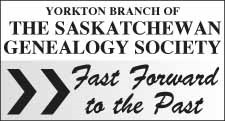Library and Archives Canada has a great little brochure called "Tracing Your Ancestors in Canada". This comprehensive brochure lists all the information and services that are available through Library and Archives Canada. To quote part of the brochure, "It acquires and preserves private papers, publications, maps, photographs and other documents in all forms; it receives publications through legal deposit; and as the permanent repository for all Government of Canada records, it serves as our country's continuing memory."
The booklet describes "the basics of genealogical research and the most useful sources." It invites your to explore LAC online. A wealth of information is available to you online; you can find out about census records; immigration records; citizenship and naturalization records; military records; land records, and much more. All this information is available by logging on to www.collectionscanada.gc.ca/genealogy. There are also many other services available, including e-mailing, faxing, or mailing documents to you that you have found at LAC and need for your genealogy research. A borrowing institution, such as a library, can request the loan of microfilm on your behalf. If you would like, you can hire a freelance researcher to search records for you. And if you are lucky enough to be in the beautiful city of Ottawa, you can visit Library and Archives Canada at 395 Wellington Street.
(It is important to note that there is no compiled list of parish information in Canada: this would include baptisms, marriages, and burials. For this type of information, you would have to contact your ancestor's church or diocese.)
If you are looking at census records, remember that census returns done before 1851 list only the head of each household. But the census returns from 1851, 1861, 1871, 1881, 1891, 1901, 1906, and 1911 list everyone in the family, and include important information such as their age, sex, religion, occupation, marital status, ethnic origin, and place of birth.
Immigration records before 1865 are limited; most have not survived. Passenger lists from 1865 to 1935 are at LAC, and contain vital information such as name, age, country or origin, occupation, and destination of these new citizens. But for records before 1925, you will need to know the month, year, and port of arrival. If you know the name of the ship, this will be a great help, as well.
There is a section for "home children": juvenile migrants that were sent to Canada between 1869 and the 1930's. Over 100,000 of these poor children were sent to Canada from Great Britain, and these names can be searched as well. You can also find the General registers of Chinese Immigration from 1885-1949.
There is so much information available at this great website: log on, and explore all it has to offer.
Closer to home, share your genealogy experiences with other people who are doing research with the Yorkton branch of the Saskatchewan Genealogy Society. This group meets once a month, and has members at all stages of genealogy research. Meetings are at the Yorkton Public Library in the History Room. For more information, call Glenn at 782-7969 or Dave at 783-1093.
Every family has a story: discover yours with the help of the Yorkton Genealogy Society! New members are always welcome!




